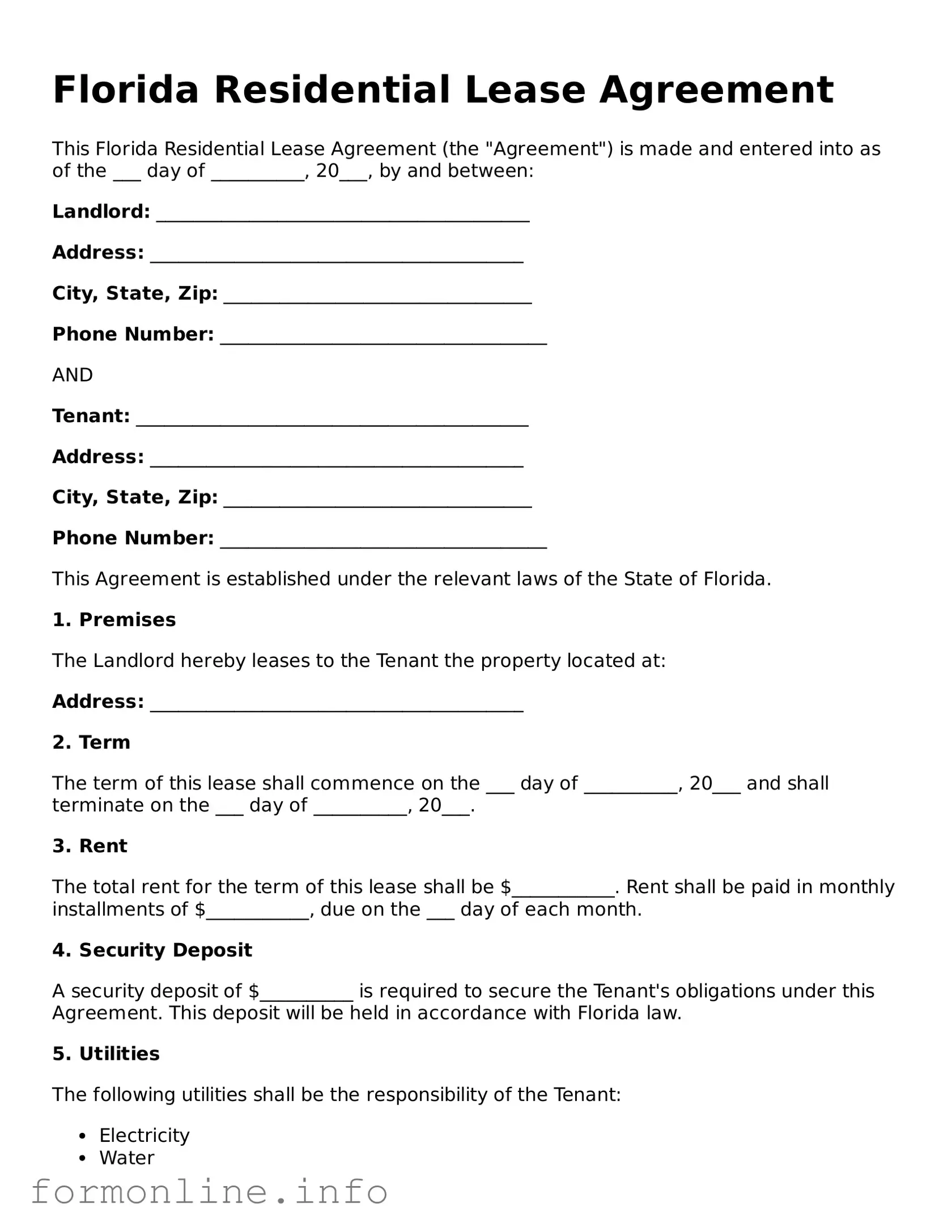Florida Residential Lease Agreement
This Florida Residential Lease Agreement (the "Agreement") is made and entered into as of the ___ day of __________, 20___, by and between:
Landlord: ________________________________________
Address: ________________________________________
City, State, Zip: _________________________________
Phone Number: ___________________________________
AND
Tenant: __________________________________________
Address: ________________________________________
City, State, Zip: _________________________________
Phone Number: ___________________________________
This Agreement is established under the relevant laws of the State of Florida.
1. Premises
The Landlord hereby leases to the Tenant the property located at:
Address: ________________________________________
2. Term
The term of this lease shall commence on the ___ day of __________, 20___ and shall terminate on the ___ day of __________, 20___.
3. Rent
The total rent for the term of this lease shall be $___________. Rent shall be paid in monthly installments of $___________, due on the ___ day of each month.
4. Security Deposit
A security deposit of $__________ is required to secure the Tenant's obligations under this Agreement. This deposit will be held in accordance with Florida law.
5. Utilities
The following utilities shall be the responsibility of the Tenant:
- Electricity
- Water
- Sewer
- Gas
6. Maintenance and Repairs
The Tenant agrees to maintain the premises in good condition and to notify the Landlord of any necessary repairs.
7. Governing Law
This Agreement shall be governed by the laws of the State of Florida.
8. Signatures
By signing below, both parties agree to adhere to the terms outlined in this Agreement:
Landlord Signature: ___________________________ Date: _______________
Tenant Signature: ____________________________ Date: _______________
It is advisable for both parties to retain a copy of this completed Agreement for their records.
